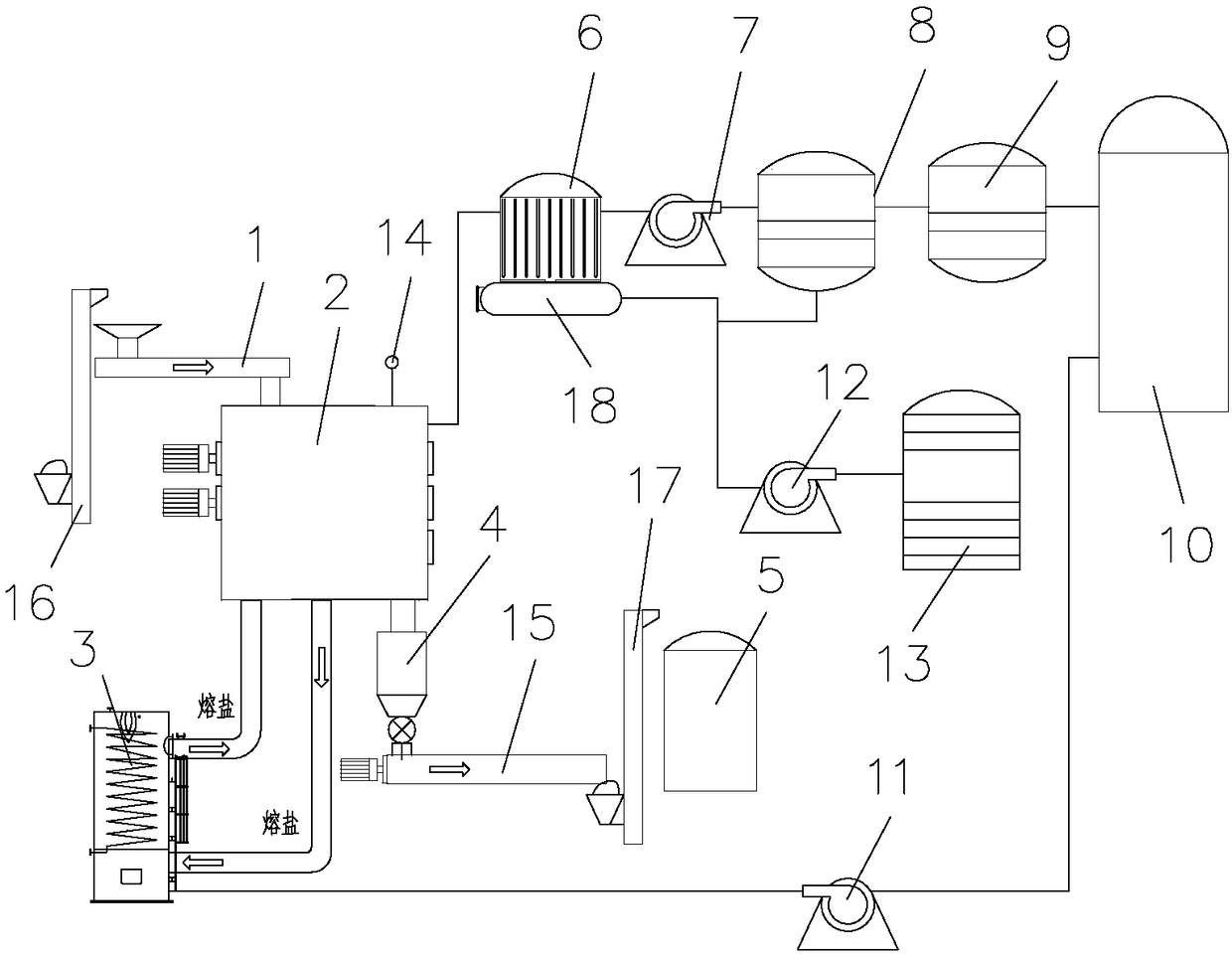Carbonization cracking system for waste plastics
A cracking system and plastic technology, used in special forms of dry distillation, petroleum industry, preparation of liquid hydrocarbon mixtures, etc., can solve the problems of uneven heating, high energy consumption, insufficient raw material recycling rate, etc. The effect of temperature stabilization and energy reduction
- Summary
- Abstract
- Description
- Claims
- Application Information
AI Technical Summary
Problems solved by technology
Method used
Image
Examples
Embodiment Construction
[0016] refer to figure 1 , a waste plastic carbonization cracking system, including a cracking furnace 2 and a molten salt furnace 3, the cracking furnace 2 has an inner shell and an outer shell, the inside of the inner shell is a cracking chamber, a sealed cavity is formed between the inner shell and the outer shell, and the molten salt furnace The molten salt outlet and the molten salt inlet of 3 are all communicated with the sealed cavity through pipelines, and the inner shell of cracking furnace 2 has raw material inlet, carbon black outlet and oil gas outlet, and the raw material inlet of cracking furnace 2 is provided with sealed feeder 1, in The carbon black outlet of the cracking furnace 2 is provided with a sealed discharger 4, and the system also includes an oil-gas condenser 6, a booster fan 7, an oil-gas separation tank 8, a desulfurization tower 9 and a gas tank 10 connected in sequence through pipelines, and the cracking furnace 2 The oil and gas outlet of the ga...
PUM
 Login to View More
Login to View More Abstract
Description
Claims
Application Information
 Login to View More
Login to View More - R&D
- Intellectual Property
- Life Sciences
- Materials
- Tech Scout
- Unparalleled Data Quality
- Higher Quality Content
- 60% Fewer Hallucinations
Browse by: Latest US Patents, China's latest patents, Technical Efficacy Thesaurus, Application Domain, Technology Topic, Popular Technical Reports.
© 2025 PatSnap. All rights reserved.Legal|Privacy policy|Modern Slavery Act Transparency Statement|Sitemap|About US| Contact US: help@patsnap.com

